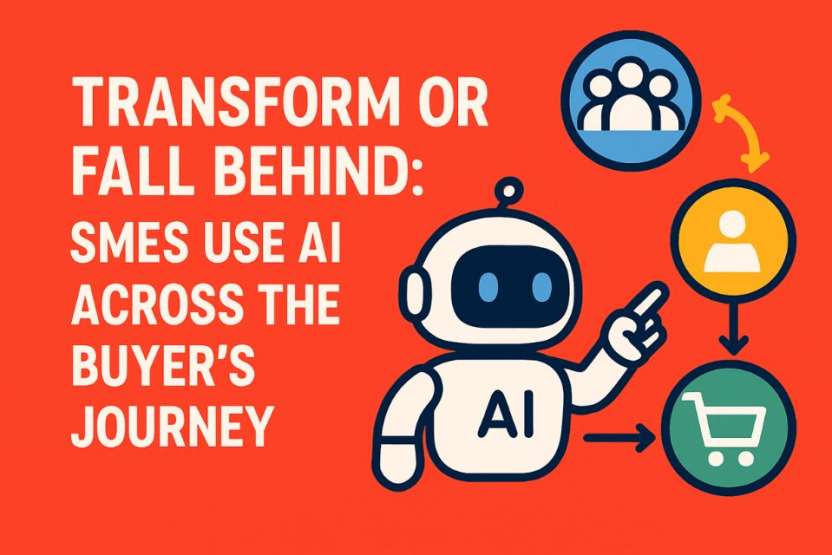9 of the top small and medium business (SMB) risks and how to avoid them
In this article, we look at 9 risks to small and medium businesses (SMB’s) and suggest pragmatic actions on how your company can avoid them.
1. Failing to keep an eye on the competition as seen from your customers perspective:
Most potential customers will research your business online relative to your competitors before engaging with you. Rapid change and evolution of products, technology, channels, services, processes and business models can result in your business becoming less attractive to potential clients and you may not even know it. As a result, an SMB may look to step up it's marketing to try to create more leads but sees little impact because the core inhibitors remain.
With most businesses ‘shop window’ being their website it is relatively easy to see how your business compares to your competition from your customers perspective. Small things can make a big difference, so it is important to keep your eyes open and reflect upon your business relatively.
Not only consider relatively the traditional 6P’s of marketing (product, price, place, promotion, people and processes) but also look at their business model.
It is increasingly common that differentiation is being achieved through innovative changes to the core model of how a company does business versus differentiating itself on the 6Ps alone.
We are constantly seeing new ways of conducting business being created around us every day. Whether this is on a macro level, with new business models such as Uber and Airbnb, or at a micro level with SMBs digitising their traditional business models and supporting processes with new web applications.
Pragmatic action: Put into your diary just one hour a month to spend monitoring what your competition is doing. Think about this from your customers’ journey. How will they discover your business, how will they explore, evaluate and buy what you offer? How does your journey compare to your competitors? Think about all 6Ps but also their core business model. Identify improvement actions, prioritise and implement the priorities.

2. Failing to keep an eye on a changing market and rapid advances in technology:
We are seeing significant technology advances that are or may go on to be disruptive to many markets (e.g. Alexa type voice searches replacing web browsers; growth of home automation; self-driven cars; Nano-technology self-cleaning glass; IoT (internet of things) connected devices; blockchain technology resolving the problem of storing, authenticating and protecting data; and so on). These advances are enabling new ways of working. As an example, the recent Amazon Go Store video illustrates an innovative trial of a shop operating with no employees in their store:
Market estimates predict that up to 47 percent of jobs are at risk of automation. This is a larger business example, but these types of changes will impact the business models of SMEs too.
Change can create a real opportunity for those focused to take advantage of it.
Pragmatic action: Schedule one hour a month to research the latest trends and changes in your industry. Keep an eye on what is being demonstrated at trade shows and subscribe to respected free industry trade publications too. Use the learning to adapt your own business model.
3. Failing to direct limited resources to the right things:
It is important for resource-constrained SMBs, to be in the habit of working smart rather than hard. Are you doing a lot of things and being busy with indiscriminate action rather than doing things that are a real priority, or that add maximum long-term value? It is important for SMBs to address this risk; plan and focus on priorities and put appropriate agile processes in place.
Pragmatic action: Create a concise business and marketing plan. Know your priorities, focus on them. Your business plan will show what success looks like before you commence your journey and will detail the key things you will do to achieve success. Once you know this then choose the right marketing strategies to achieve your stated objectives to achieve success.

4. Ineffective marketing messages to your priority target audiences:
Ask someone who is independent to your business to look at your website and to articulate what is your value proposition to your customers; what are your key selling points and why should potential customers purchase from you versus your competition.
It is important to ensure the messages your business is sending through your marketing channels align with resolving the needs & issues of your customers from their perspective.
Pragmatic action: Schedule two-hours to reflect upon messages with the aim of enhancing your customer-centric messaging. Here is a simple six-step model that may help (repeat this process for each primary decision maker):
- Identify a target primary customer decision maker.
- Detail their main business objectives and what issues they need to resolve to successfully achieve them.
- Detail the top five challenges each are facing in resolving their main issues and will want to be assured of before proceeding to any purchase.
- Detail the value, ideally unique from the competition, that your company offers in resolving these customer problems.
- Detail the solution your company offers to resolve their problems.
- Detail the proof points that are available to give customers confidence that what the company is saying to resolve their problems is demonstrably true.
Once you have captured your messaging ensure all your marketing assets and content details what you wish to say to your prospects and customers.
5. Jumping straight to choosing and deploying marketing tactics:
Do you really need to be doing the things you are doing? At Epitomise, we are frequently contacted by SMB companies who have been advised that they need to do something that isn’t clearly linked to a clear prioritised business objective. A common example is that they have been told they need a new website as their current one isn’t optimised for SEO (Search Engine Optimisation) and they need an SEO program to create more leads too. They may have then spent months and thousands of pounds creating both only to find themselves with no leads and they can’t find themselves in Google search either.
Spending money on the right things will bring results conversely throwing money away on the wrong things destroys value and results.

For example, a pragmatic marketing campaign may land on a dedicated landing page on MailChimp and your short-term aims to generate sales leads may be pragmatically and adequately served.
Pragmatic action: Before you choose any marketing tactic relatively consider your options, know what results you expect and always start with clear objectives that you are trying to achieve as this will help you prioritise spend. If you don’t know, either research what others are saying or seek help.
6. SMBs often fail to evolve their marketing to embrace modern digital marketing practices:
Many SMEs are losing out on the significant business opportunity as they are failing to embrace relevant modern digital marketing practices to productively and cost-effectively achieve their desired business objectives. Being focused on delivering their specific business services and products to their own customers many SMB leaders will not have the time to be marketing experts too.
A very simple example of digital versus traditional marketing is the leaflet drop. The modern alternative to dropping leaflets through potential customer doors is posting content into your target clients social media feeds. This can be done quickly.
The benefit is digital transparency provides immediate feedback on whether your messages and marketing are achieving engagement and if they aren’t you change them quickly to optimise your results and return.
Pragmatic action: Why not try a new approach over the next month? Schedule two-hours and plan to try something new that is appropriate to achieve your business aims. For example, a boosted social post on Facebook or Instagram is very easy to set up and run. Automating an email campaign with a tool such as MailChimp is straightforward too. If you are unsure how to do this there are numerous free resources and videos to help you on your initiative. Just go to YouTube and enter what you wish to do and see what is returned.
7. Failing to test and tweak marketing strategies:
Marketing requires testing and constant modification to get the very best results. What works for one SME company may not work for another. Every marketing tactic has its value to achieve the right objective otherwise it would not exist.

Pragmatic action: Test frequently and fail fast. If something isn't working for your business, change it. If you don’t have the time and resource seek help. Doing the wrong things in the wrong way is the quickest route to wasting scarce resource and failure.
8. Limited focus and awareness of profitability:
Only 40% of SMB’s are profitable, 30% break even, and 30% are losing money (Source: Small Business Trends). Know your profitability and keep a very close eye on maintaining it. Slipping into winning business at all cost can result in projects that cost rather than make money. Profit allows for growth.
Pragmatic action: Use easy to use project management tools and aids. For example, use Toggl to keep a track of how much time you are spending on a specific project. You can use this information along with analysing your other cost of sales items to determine what margin and profit you are making.
9. Struggling with cash flow:
According to research by Zurich Insurance:
two-thirds of SMEs said they knew of businesses that had been forced to close because of cash flow problems; two in five said late payments had caused serious problems with their own cash flows.

Pragmatic action: To address cash flow challenges there are 8 suggested strategies within this Independent article that includes the use of credit checks, being clear on payment terms, avoiding cheques, effective problem escalation and better communication on when you’re issuing invoices.
Like this? Share it!
About Epitomise:
We help SME and Technology companies use modern marketing strategies to grow. From strategic advice to tactical execution grow your business with the support of a 'top-100' award-winning marketing leader who is supported by a network of expert marketing specialists. With over 20-years' senior marketing experience and a track record of delivering results, as an attentive expert strategic marketing and services company, we help you grow your brand, leads, sales and customers by doing the right things the right way. Help for as long or as short as you need.






